|
|
|
| |
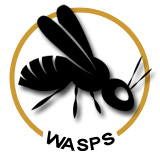 |
Wasp's
The Wasp (Vespula Vulgaris) can be considered a beneficial insect, and yet, can also be problematic. Wasps are foragers & predators. They play an important role in the control of other nuisance insects.
Wasps, in general are not a direct concern to the public health. Most wasp problems begin to develop in April & May. This is the time when the Queen emerges from her Winter hibernation and ventures forth to begin the search for a suitable nesting site.
The extraordinary adaptation skills of the Wasp enable it to live in a wide range of habitats, these include such places as Garden hedges, under the eaves of houses, in sheds and other out-buildings.
During August and September, the nest becomes more active. As a result, they tend to become an increased nuisance. This is when the Queen stops laying her eggs and the workers are no longer needed to cultivate the food.
The wasp will vigorously defend their nest and will use their sting as a defence mechanism. Unlike the Bee a wasp can deliver multiple stings and although this can be extremely painful, is not usually life threatening. However, some individuals do find that the sting may cause serious allergic reactions.
At Broadsword Pest Control we provide a friendly and professional approach, utilising professionally approved pesticides to eradicate your problem. |
|
|
 |
Mice, Rats & Other Rodents
The United Kingdom has two species of rats, the Norway or Brown rat (Rattus Norvegicus) and the native Black or ship rat (Rattus Rattus).
Over the past century the Norwegian rat has slowly replaced the Black rat as the dominant species, with the Black rat being largely confined to Seaport areas around the country. In order to thrive rats, require three things, food, water and harbourage. The Norway rat consumes on average one tenth of their body weight on a daily basis.
Rats, although having a fear of new objects (known as Neophobic) will explore areas. Rats are capable of causing damage to the food chain through contamination of their faeces and urine.
They have the ability to pass onto humans such diseases as Salmonella, Hantavirus and Leptospirosis. Rats are also capable of causing damage to buildings through the destruction of cabling and concrete.
At Broadsword Pest Control we prefer to use an integrated pest management approach to our work, utilising humane trapping methods in the first instance and only using a rodenticide based management program as a last resort. |
|
|
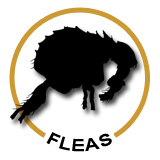 |
Fleas
There are about 1,400 species of flea’s that have been identified around the world. Of which about 60 species are found in Britain.
All adult fleas are wingless and vary in colour from Grey through to Mahogany. Their mouths are adapted for extracting blood from their hosts.
The two most common fleas found on our shores are the Human Flea (pulex irritos) and the Cat Flea (Ctenocephalido felis).
The Cat Flea is the most common of the variety that humans come into contact with, despite its name the Cat Flea is also found commonly on dogs. The Flea larvae generally feed in and around bedding areas, living on dead skin and fur flakes, dead insects and dust.
Price of Treatment includes a pre-treatment visit , initial treatment and approx. 4 weeks later an additional second treatment (if necessary). Any further treatment beyond this will be charged at 50% of the original price. |
|
|
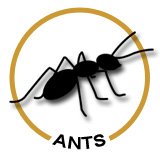 |
Ants, Flying Ants and Nests
Ants are one of the most common of pests to be found in the United Kingdom and can be found frequently in households.
They are attracted to sweet foods, for instance honey and sugar based produce.
Ants, whilst they are not usually associated with health concerns, are non-the less a nuisance. When a worker ant locates a food source it has the ability to communicate with other ants and thereby informing them of where food sources are to be found. This can lead to a large number of ants invading your home and thereby contaminating work surfaces and food produce.
The most common ants that are found in the United Kingdom are the Garden or Black ant (Lasius Niger) these will readily enter buildings in order to forage for food.
To a lesser degree, but still found frequently are the Pharaoh Ant, The Argentine Ant and the Ghost Ant.
At Broadsword Pest Control, we utilise products which causes a slight delay in mortality, this encourages the ants to consume the bait and return it to the nest site. By doing this the bait is spread amongst the nest and reaches more of the ant population thus resulting in a reduction of infestation levels.
|
|
|
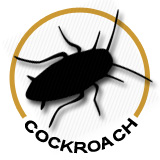 |
Cockroaches
The two most common species of cockroaches in Britain are the Oriental Cockroach (Blatta Orientalis) and the German Cockroach (Blatta Germanica).
Both species are primarily nocturnal and prefer warm conditions. They feed on a wide range of foods but do need access to water.
Although they frequent buildings, they can also be found outdoors, around drains, dustbins and rubbish areas, however this is more common with the Oriental variety than the German.
The Oriental cockroach can measure anything between 17-30mm in length and are dark Brown to Black in colour. The German Cockroach is smaller and generally measures between 12-15mm in length are Tan to Brown in colour. |
|
|
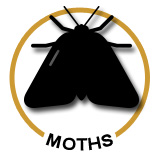 |
Clothes & Carpet Moths
The case bearing cloth moth (Tinea Pellinella) and its close associate, the common cloth moth (Tineola Bisselliella), also known as the webbing cloth moth, have many similarities.
They are both responsible for much of the damage that is caused to household clothing and woollen carpets. The larvae of these moths are considered to be serious pests, this is due to the fact that they will generally obtain their food source from clothing or carpets that are made from wool. However, their food range can include cotton, linen and silk fabrics.
They will eat synthetic fibre if it is blended with wool. The common cloth moth prefers dark areas, with larvae commonly being found under furniture, rugs and around carpet edges.
Broadsword Pest Control will undertake an initial survey in order to determine the extent of the problem. Then if a problem has been established an initial treatment will be undertaken (this usually requires the room(s) identified as requiring treatment to be vacated for a minimum of four hours).
A second treatment, where necessary will take place approx. four weeks after the initial treatment this is included in the price. Any further treatment beyond this will be charged at 50% of the original price. |
|
|
Think Wildlife
The campaign for responsible rodenticide use (CRRU) is a response to concerns raised by government agencies responsible for the regulations of rodenticides, in that some species of wildlife, such as Red Kites, Barn Owls and Kestrels are being accidently exposed to these products through secondary poisoning.
As a result, Broadsword Pest Control adhere to the “Think Wildlife” program, which promotes the best practise and responsible rodent control, utilising rodenticides only as a last resort option, thereby protecting these valued species for future generations.
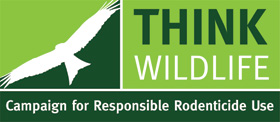
|
|
|
|
|